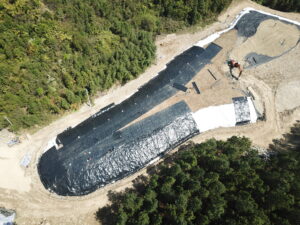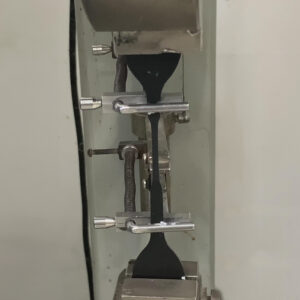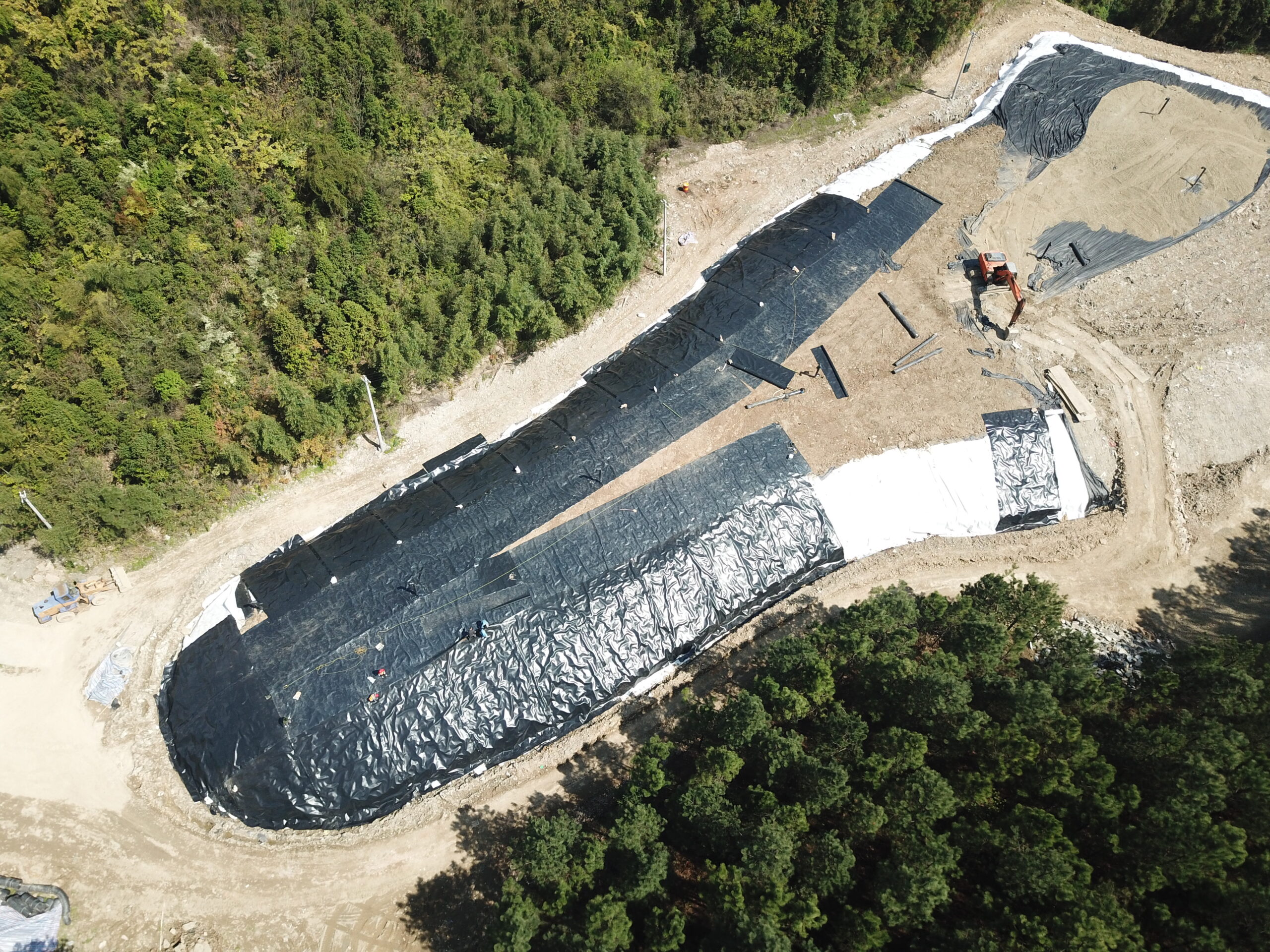What width to choose for geomembrane?
The selected width of the geomembrane depends on the design requirements of the tailings pond and the specific application scenario. Generally speaking, the selected width of the geomembrane should meet the following considerations:
Design requirements: Determine the width of the geomembrane according to the specifications and requirements for tailings pond design. Design specifications typically specify an appropriate range of geomembrane widths to meet performance requirements such as penetration prevention requirements and soil stability.
Geometry: Consider the geometry and dimensions of the tailings pond and select an appropriate geomembrane width to ensure complete coverage of the bottom and side walls of the tailings pond and sufficient extension beyond the geomembrane fixed edge.
Construction operations: Consider the convenience and efficiency of construction operations and select the appropriate geomembrane width. Wider geomembranes may require more joining and securing work, while narrower geomembranes may require more joints, increasing construction complexity.
Material Availability: While selecting the geomembrane width, one should also consider the range of geomembrane widths available in the market. Common geomembrane widths include 3 meters, 4 meters, 5 meters, etc. Choose the appropriate width according to actual needs to reduce material waste.

What is the tensile strength of geomembrane?
The tensile strength (also known as tensile strength) of a geomembrane is the maximum tensile force or tensile stress that a material can withstand. The tensile strength of a geomembrane depends on its material type and thickness. Common geomembrane materials include polyethylene (HDPE), linear low-density polyethylene (LLDPE), polyvinyl chloride (PVC), etc.
The following are the tensile strength ranges for some common geomembrane materials:
HDPE geomembrane:
The tensile strength of ordinary HDPE geomembranes is usually between 15 MPa and 40 MPa.
The tensile strength of high-strength HDPE geomembrane can reach more than 40 MPa.
LLDPE geomembrane:
The tensile strength of LLDPE geomembrane is usually between 15 MPa and 30 MPa.
PVC geomembrane:
The tensile strength of PVC geomembrane is usually between 20 MPa and 35 MPa.

It should be noted that the specific tensile strength of geomembrane may vary according to factors such as brand, production process and material formula. In practical applications, geomembrane materials with appropriate tensile strength can be selected according to engineering needs. In addition, engineering design and specification requirements should be combined to determine the appropriate geomembrane material and its tensile strength.
In practical engineering applications, the tensile strength of geomembranes is generally confirmed by laboratory testing and certification to confirm its performance indicators. Therefore, it is recommended that when selecting and using geomembranes, you refer to the technical information, specification sheets and certification reports provided by the supplier to ensure that the selected geomembrane meets the engineering requirements and has the required tensile strength performance.
Author
-

Founded in 2002, Tinhy's team focuses on the manufacturing, marketing, installation, application and research and development of geosynthetic materials.
View all posts




